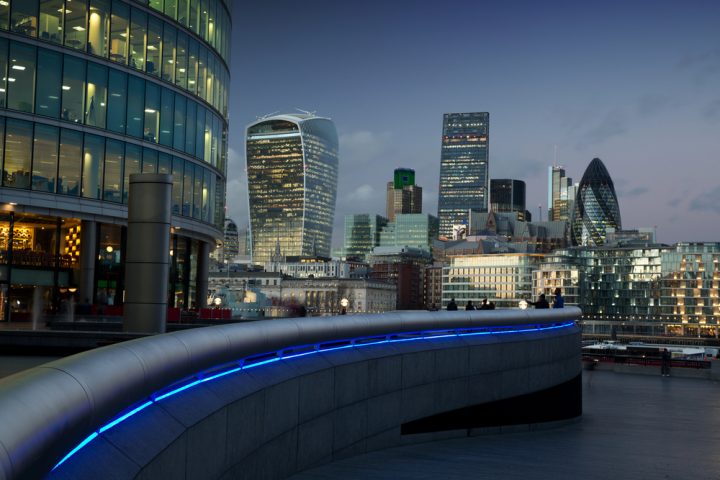Fashion in London has always been about more than just what people wear. It’s about identity, expression, and the freedom to define yourself on your own terms. Over the past decade, one of the most striking developments in this landscape has been the rise of gender-neutral and unisex clothing — a quiet but powerful revolution reshaping the way people think about fashion, inclusivity, and individuality.
From Soho to Shoreditch, from independent designers to high-street brands, London’s approach to style has always blurred boundaries. The city has long been a place where creativity thrives, and where people feel free to reject labels and experiment. This spirit is now finding form in clothing that prioritises comfort, quality, and authenticity over traditional gender divisions. Simple items like personalised t shirts, oversized jackets, and loose tailoring are leading a movement that values individuality and inclusivity over conformity.
The changing face of modern fashion
For much of the 20th century, fashion was structured around a clear binary: menswear and womenswear. These categories dictated everything from sizing and fabrics to colour palettes and fit. Yet in recent years, cultural and social shifts — driven by younger generations and progressive designers — have pushed back against these norms.
In London, particularly, the conversation has moved beyond mere aesthetics. The city’s creative communities have embraced the idea that clothing can be fluid, rejecting the notion that gender should define style. Instead, emphasis has turned towards design that works for anyone — garments that adapt to the person wearing them rather than forcing people to adapt to them.
This approach doesn’t just change how clothes are made; it transforms what they represent. A gender-neutral wardrobe reflects freedom, equality, and belonging — values that are increasingly shaping London’s cultural identity.
Functionality and comfort as design values
The rise of unisex apparel is also a reaction to a practical need for comfort and simplicity. People are choosing versatile pieces that fit seamlessly into everyday life, without the restrictions or expectations often imposed by gendered design.
Items such as plain personalised t shirts, relaxed fits, and minimalist colour schemes allow wearers to express themselves without constraint. The focus shifts from fashion as performance to fashion as empowerment — giving people the ability to choose how they want to be seen on any given day.
This idea aligns closely with broader lifestyle trends. London’s pace demands functionality: commuters, creatives, and professionals alike need clothing that transitions easily from work to social settings. Gender-neutral design offers exactly that flexibility, combining style with purpose in a way that feels contemporary and relevant.
Cultural influence and the London aesthetic
London has always played a central role in challenging global fashion norms. From the punk rebellion of the 1970s to today’s sustainability movements, the city has a history of turning fashion into cultural commentary. The move towards unisex and inclusive apparel fits naturally into that narrative.
Young designers in London are experimenting with shapes, silhouettes, and materials that reject binary assumptions altogether. Some are repurposing vintage fabrics, while others are building collections around recycled materials or ethical production. The result is a uniquely London aesthetic: experimental, conscious, and effortlessly chic.
On the streets, this shift is visible in the rise of capsule wardrobes and minimalist styling. People are pairing neutral tones with bold accessories or mixing traditional masculine and feminine elements to create something entirely their own. It’s not about erasing gender; it’s about giving everyone the freedom to interpret it differently.
Inclusivity as the new normal
The move towards gender-neutral fashion is part of a broader conversation about inclusivity — not just in design, but in representation and accessibility. In recent years, London Fashion Week has featured more diverse models, fluid collections, and designers who see gender as a spectrum rather than a category.
What was once considered avant-garde has quickly become mainstream. Many brands, both independent and established, now offer unisex collections designed to be worn by anyone, regardless of size, identity, or expression. This reflects not only cultural change but also economic reality — consumers are increasingly drawn to brands that represent their values and reflect the world they live in.
For many people, clothing that transcends gender categories feels not only inclusive but also honest. It recognises the diversity of human experience and celebrates individuality without forcing people into predefined boxes.
Sustainability and slow fashion
The inclusive revolution in fashion is also tied closely to the rise of sustainable and ethical production. The gender-neutral approach encourages fewer, better-quality garments — a shift towards slow fashion that values longevity over trend cycles.
By designing pieces that can be shared or restyled, rather than replaced, unisex fashion naturally reduces waste and overconsumption. Many London-based designers are embracing this philosophy, creating timeless silhouettes that remain relevant season after season.
Sustainability and inclusivity often go hand in hand because both movements challenge outdated systems. They ask similar questions: who is fashion for, and what does it stand for? In doing so, they redefine the industry’s priorities — from profit and novelty to purpose and connection.
A new era of self-expression
Ultimately, the unisex and gender-neutral fashion movement represents more than a change in style; it reflects a shift in mindset. It’s about authenticity — wearing what feels right rather than what is prescribed. For Londoners, this feels particularly resonant. The city’s cultural landscape has always been defined by diversity and defiance, by a refusal to conform and a drive to express individuality.
As this inclusive revolution continues, the hope is that clothing becomes a tool of empowerment rather than restriction. Whether it’s a tailored coat, a pair of trainers, or a simple personalised t shirt, what matters most is how it makes the wearer feel — confident, comfortable, and completely themselves.
London’s embrace of unisex fashion shows that inclusivity doesn’t mean uniformity. It means opening up possibilities — allowing everyone to find their own version of “chic”, one that reflects both personal identity and collective progress.
In a world where fashion is often fleeting, this movement feels grounded and enduring. Gender-neutral design is not just a trend; it’s a reflection of where society is heading: towards openness, understanding, and the freedom to simply be.






